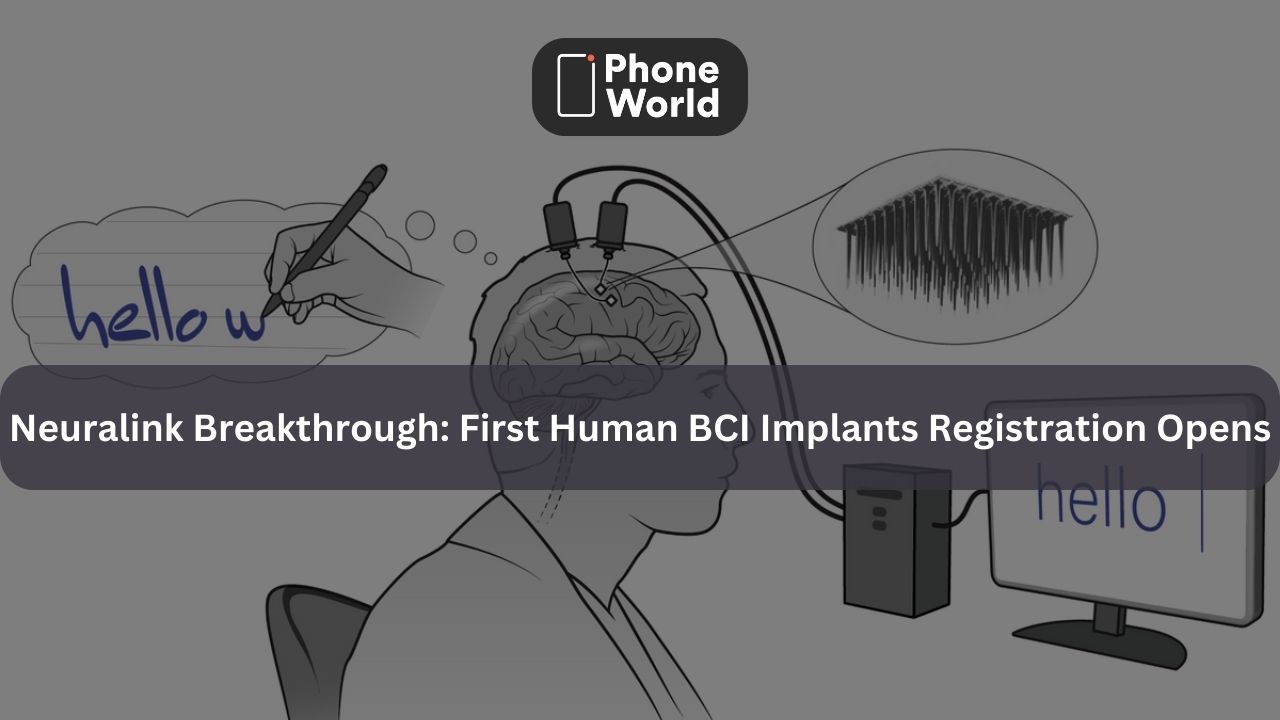Neuralink Milestone: Human BCI Implant Enrollment Now Open

On Tuesday, Elon Musk’s Neuralink firm announced that it has finally started registration for its first-in-human research, which is being referred to as Precise Robotically Implanted Brain-Computer Interface (PRIME, not PRIBCI). Neuralink is the company that is responsible for developing the experimental N1 brain-computer interface (BCI). The announcement comes about a year after the business had its most recent “show and tell” event, four months after the period Musk had said the trials would start, and almost a month after a competitor named Synchron had already beaten them to market.
According to the official communication from the firm, the PRIME study has been designed with the objective of examining the safety of the implant (N1) and surgical robot (R1), as well as evaluating the initial functionality of the brain-computer interface (BCI) in enabling individuals with paralysis to operate external equipment through their cognitive processes. This study focuses primarily on individuals with quadriplegia resulting from cervical spinal cord injury or amyotrophic lateral sclerosis (ALS).
It is important to note that the claims made by Musk regarding the potential transhumanistic applications of this technology, such as learning Kung Fu from an SD card, uploading consciousness to the web, and controlling household electronics with the mind, lack substantiation.
Indeed, the objective is genuinely pursued by both the corporation and the technological innovation. Brain-computer interfaces (BCIs) serve as a vital intermediary connecting the human mind with machines by transforming the analog electrical signals generated by the brain into digital signals that can be comprehended by computers. The N1 system developed by Neuralink utilizes a high-fidelity Utah Array comprising of thin probes.
In contrast to Synchron’s Stentrode, the installation of Neuralink’s probes necessitates a robotic keyhole surgery procedure, which is conducted by the R1 robot surgeon resembling a sewing machine. The aforementioned array will be implanted into the patient’s motor cortex, enabling the recording and wireless transmission of electrical impulses generated by this area. These impulses will be interpreted by a corresponding application, which will translate them into actionable commands for the computer. According to the statement, the primary objective of our Brain-Computer Interface (BCI) is to provide individuals with the capability to manipulate a computer cursor or keyboard solely via the power of their thoughts.
Neuralink initiated the development of the N1 system in 2017, positioning itself as an early adopter in the field by publicly engaging in the commercial advancement of brain-computer interface technology. Nevertheless, Neuralink’s progress was impeded in the previous year following credible allegations of inflicting unnecessary suffering and mortality on numerous animal test subjects.
Consequently, this prompted an investigation by the United States Department of Agriculture (USDA) on charges of animal cruelty and led to the Food and Drug Administration (FDA) denying the company’s petition to expedite human trials. The PRIME trial is currently being carried out under the investigational device exemption (IDE) granted to Neuralink by the FDA in May of this year.
Check Out: FDA Not Satisfied with Neuralink’s BCI Implants Ambitions.
PTA Taxes Portal
Find PTA Taxes on All Phones on a Single Page using the PhoneWorld PTA Taxes Portal
Explore NowFollow us on Google News!





